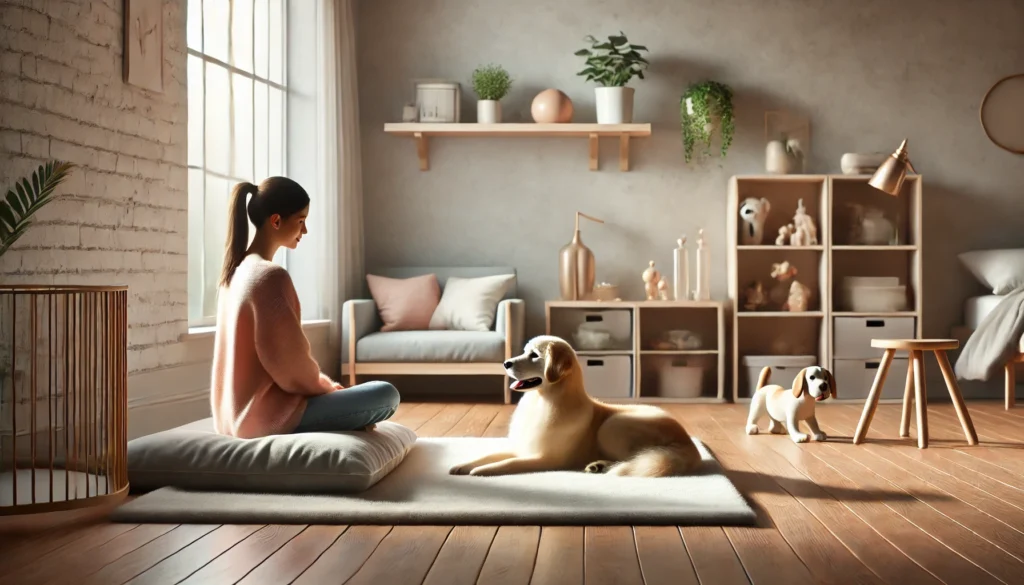Adopting a dog or cat is a life-changing decision — for both you and your new pet. Whether rescued from the streets, adopted from a shelter, or rehomed from a previous family, newly adopted pets often come with emotional baggage. They may be cautious, unsure, or even fearful of their new environment.
Trust isn’t instant — it’s built slowly through consistency, respect, and patience. In this article, you’ll learn how to earn your new pet’s trust and create a lifelong bond that turns your home into their sanctuary.
Why Trust Is the Foundation of a Strong Bond
Without trust, your pet may:
- Hide, growl, or avoid contact
- Struggle with training and routines
- Exhibit fear-based behaviors like barking, biting, or running away
- Feel insecure in their new surroundings
- Take longer to integrate with family or other pets
Trust allows your dog or cat to relax, feel safe, and connect with you emotionally.
Step One: Set Up a Calm, Predictable Space
Before your pet arrives, prepare a low-stress environment. Avoid overwhelming them with too much space or activity.
What to include:
- A private, quiet area with a bed or crate
- Water and food bowls in a consistent location
- Litter box or potty spot (away from high-traffic areas)
- Familiar items if possible (blanket from the shelter, soft toy, etc.)
This first impression shows your pet that their needs are met and they’re not under threat.
Step Two: Let Them Set the Pace
Especially in the first 72 hours, avoid trying to cuddle or handle them constantly. Instead:
- Sit quietly in the room and allow them to approach
- Avoid eye contact if they’re nervous — look with soft eyes or blink slowly
- Don’t reach over their head or approach from behind
- Speak in a soft, steady tone
- Reward small bravery with gentle praise or treats
Respect their boundaries from the beginning — it sets the tone for mutual trust.
Step Three: Create a Daily Routine
Routine builds security. Feed, walk, and play at similar times each day. Keep household energy predictable (no sudden loud music or bursts of activity).
A basic daily rhythm might include:
- Morning potty and breakfast
- Short walk or interactive play
- Rest time
- Evening feeding
- Quiet cuddle or grooming session before bed
Even cats, who are more independent, rely on environmental consistency to feel safe.
Step Four: Use Positive Reinforcement
Trust grows when your pet learns that you bring good things — not punishment.
- Use treats, praise, or toys to reward desired behavior
- Avoid scolding, yelling, or sudden corrections
- Teach commands gently, using food and patience
- Reinforce calm behavior (e.g., reward when they lie near you on their own)
This shows your pet that they can safely try new behaviors without fear.
Step Five: Be Patient With Fear and Setbacks
Adopted pets may come with trauma, neglect, or negative associations. Healing isn’t linear — they may regress before they improve.
Signs of fear-based stress include:
- Cowering, growling, or snapping
- Inappropriate urination or defecation
- Hiding for extended periods
- Shaking or panting with no exertion
- Excessive grooming (in cats)
Don’t take it personally. Provide space, stay calm, and seek support if needed.
Building Trust With Adopted Dogs
Dogs are pack animals — they crave leadership, but not dominance.
Best practices:
- Use leashed walks to build routine and exposure
- Teach “watch me,” “sit,” and “place” as ways to create structure
- Give them a crate or pen to retreat when needed
- Offer enrichment like puzzle toys or sniffing games to reduce anxiety
- Avoid dog parks or overstimulating areas in the early weeks
Trust-building walks — where the dog feels safe near you — are more powerful than play alone.
Building Trust With Adopted Cats
Cats need time and space to form bonds. Forcing interaction backfires.
Best practices:
- Start with a small room setup and gradually expand territory
- Use scent swapping (towels, toys) to help them adjust
- Reward approaching, sniffing, or sitting near you
- Use wand toys to build playful trust
- Let them come to you for affection — and stop before they show overstimulation signs (tail flicks, ear twitching)
Bonding with a cat may take weeks or months — but the reward is worth the patience.
Managing Multi-Pet Introductions
If you already have pets:
- Keep them separated at first
- Introduce through scent and sight (under a door, using a gate, etc.)
- Use treats and calm behavior near the newcomer to build association
- Supervise all interactions — don’t rush free access
- Reward peaceful coexistence before expecting close play or cuddling
One wrong introduction can delay bonding for weeks — always go slow.
When to Seek Professional Help
If trust issues persist for several weeks, consult a:
- Veterinarian (to rule out pain or illness)
- Certified behaviorist (for trauma or aggression)
- Trainer (for dogs struggling with basic routines)
- Shelter counselor (many offer post-adoption guidance)
There’s no shame in asking for help — every pet is different.
The Trust Timeline: What to Expect
Trust can grow quickly — or take months. Here’s a rough guideline:
- First 3 days: Confusion, fear, curiosity
- First 3 weeks: Settling into routine, testing boundaries
- First 3 months: Bond formation, comfort with surroundings
- 6+ months: Full trust, emotional attachment, confident routines
Celebrate the small milestones: the first tail wag, the first nap near you, the first purr. These are signs of a bond that’s building — moment by moment.
You’re Their Safe Place Now
Trust is the greatest gift you can offer a newly adopted pet. It’s not built with treats alone — but with consistency, respect, and showing up with kindness every day.
Your new family member may not know what love means at first. But with time, you’ll become their world — and they’ll become a loyal, loving part of yours.






